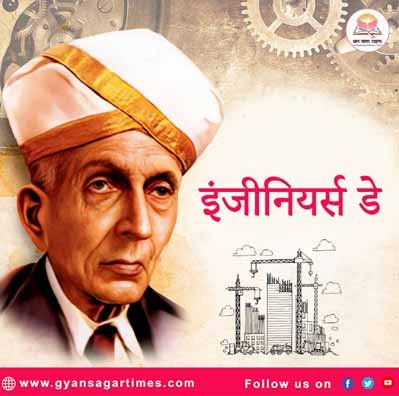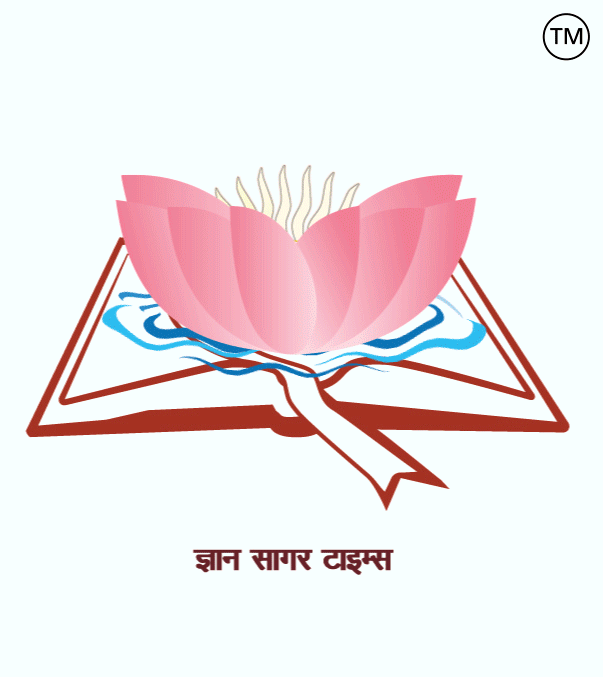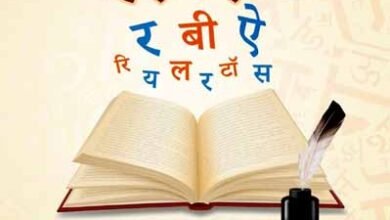
अभियंता दिवस…
आज ही के दिन वर्ष 1861 में मोक्षगुंडम विश्वेश्वरैया का जन्म मैसूर (जो कि अब कर्नाटक में है) के ‘मुद्देनाहल्ली’ नामक स्थान पर एक गरीब परिवार में हुआ था. उनके पिता वैद्य थे. विश्वेश्वरैया का बाल्यकाल बहुत ही आर्थिक संकट में व्यतीत हुआ था. विश्वेश्वरैया ने अपनी प्रारम्भिक शिक्षा गांव के प्राइमरी स्कूल से प्राप्त की.विश्वेश्वरैया जब केवल 14 वर्ष के थे, तभी उनके पिता की मृत्यु हो गई थी. आगे की शिक्षा उन्होंने बैंगलोर में अपने रिश्तेदारों के घर रहकर और अपने से छोटे बच्चों को ट्यूशन पढ़ा कर किसी तरह बड़े प्रयास से अपना अध्ययन ज़ारी रखा.
करीब 19 वर्ष की आयु में बैंगलोर के कॉलेज से उन्होंने बी.ए. की परीक्षा प्रथम श्रेणी में उत्तीर्ण की साथ ही वहां के प्रिंसिपल के प्रयास से उन्हें पूना के इंजीनियरिंग कॉलेज में प्रवेश मिल गया. अपनी शैक्षिक योग्यता के बल पर उन्होंने छात्रवृत्ति प्राप्त करने के साथ साथ पूरे मुम्बई विश्वविद्यालय में सर्वोच्च अंक प्राप्त कर इंजीनियरिंग की डिग्री प्राप्त की. इसी सफलता के आधार पर उन्हें मुम्बई में असिस्टैंट इंजीनियर के पद पर नियुक्ति मिली थी. अपने इस पद पर रहते हुए उन्होंने सबसे पहली सफलता प्राकृतिक जल स्रोत्रों से घर घर में पानी पहुँचाने की व्यवस्था करना और गंदे पानी की निकासी के लिए नाली – नालों की समुचित व्यवस्था करके प्राप्त की.
विश्वेश्वरैया ने सिंचाई में सहायता करने के लिए नहरें और बांध बनाये.बम्बई प्रेसीडेन्सी की नौकरी विश्वेश्वरैया ने छोड़ी ही थी कि उन्हें अपने राज्यों में विकास गतिविधियों को देखने के लिए हैदराबाद के निज़ाम और मैसूर महाराजा के प्रस्ताव मिले.चीफ़ इंजीनियर बनने के तीन साल बाद मैसूर के महाराजा ने विश्वेश्वरैया को वहाँ का दीवान (प्रधानमंत्री) बना दिया.अब उन्हें योजना बनाने, विकास का बढ़ाने व प्रोत्साहित करने का अधिकार प्राप्त हो गया था. विश्वेश्वरैया आरक्षण के विरुद्ध थे और इस मामले में उनमें और महाराजा में मतभेद हो गया था.
विश्वेश्वरैया ने ज़ोर दिया कि वह सरकारी पदों की गुणवत्ता को कम नहीं करेंगे. यह आलस्य व अकार्यकुशलता को जन्म देता है. जब उन्होंने यह देखा कि महाराजा निम्न व पिछड़े वर्ग के लोगों की भलाई के लिए नियमों में ढील देने के दृढ़ संकल्प हैं तो उन्होंने वर्ष 1919 में त्यागपत्र दे दिया.
विश्वेश्वरैया ने जब नौकरी छोड़ी उस वक्त उनकी उम्र 58 वर्ष से अधिक थी. नौकड़ी छोड़ने के बाद उन्होंने कई पुस्तकें लिखीं और भारत के आर्थिक विकास का भी मार्गदर्शन किया. जब पंडित नेहरू ने गंगा पर पल बनाने का निर्णय लिया तब नेहरू ने यह सुझाव दिया कि गंगा पर पुल बनाने के लिए वह विभिन्न राज्य सरकारों के प्रस्तावों की जांच करें। उन्हें बिहार में मोकामा, राजमहल, सकरीगली घाट, और पश्चिम बंगाल में फ़रक्का में से दो स्थलों को चुनना था.
विश्वेश्वरैया ने इन स्थलों का दौरा किया और कड़े परीक्षणों के बाद उन्होंने मोकामा और फ़रक्का नामक स्थानों पर गंगा में पल बनाने का सुझाव दिया था. विश्वेश्वरैया को वर्ष 1955 में भारत रत्न से सम्मानित किया गया था.
उनके इंजीनियरिंग के असाधारण कार्यों में मैसूर शहर में कन्नमबाडी या कृष्णराज सागर बांध बनाना एक महत्त्वपूर्ण कार्य था. उन्होंने बम्बई प्रेसीडेन्सी में कई जलाशय बनाने के बाद, सिंचाई व विद्युत शक्ति के लिए उन्होंने कावेरी नदी को काम में लाने के लिए भी योजना बनाई थी. कृष्णराज सागर बांध भारत में बना सबसे बड़ा जलाशय था. इस बहुउद्देशीय परियोजना के कारण अनेक उद्योग विकसित हुए, जिसमें भारत की विशालतम चीनी मिल, मैसूर चीनी मिल भी शामिल है. अपनी दूरदृष्टि के कारण, विश्वेश्वरैया ने परिस्थिति विज्ञान के पहलू पर भी पूरा ध्यान दिया था.
========== ========= ===========
Engineer’s Day…

On this day in 1861, Mokshagundam Visvesvaraya was born in a poor family in a place called ‘Muddenahalli’ in Mysore (which is now in Karnataka). His father was a doctor. Visvesvaraya’s childhood was spent in a great financial crisis. Visvesvaraya received his early education from the village primary school. When Visvesvaraya was only 14 years old, his father died. He continued his further education with great effort by staying at his relatives’ house in Bangalore and teaching tuition to children younger than him.
At the age of about 19, he passed the BA examination in first class from a college in Bangalore and with the efforts of the principal there, he got admission in the Engineering College of Pune. On the basis of his educational qualification, he got a scholarship and also got an engineering degree by getting the highest marks in the entire Mumbai University. Based on this success, he was appointed to the post of Assistant Engineer in Mumbai. During his tenure in this position, his first success was to arrange for the supply of water from natural sources to every house and the proper arrangement of drains for drainage of dirty water.
Visvesvaraya built canals and dams to help in irrigation. Visvesvaraya had just left the job of Bombay Presidency when he got proposals from the Nizam of Hyderabad and the Maharaja of Mysore to look after the development activities in their states. Three years after becoming the Chief Engineer, the Maharaja of Mysore made Visvesvaraya the Diwan (Prime Minister) there. Now he had the right to make plans, promote and encourage development. Visvesvaraya was against reservations, and there was a difference of opinion between him and the Maharaja on this matter.
Visvesvaraya insisted that he would not reduce the quality of government posts. This gives rise to laziness and inefficiency. When he saw that the Maharaja was determined to relax the rules for the welfare of the lower and backwards classes, he resigned in the year 1919.
Visvesvaraya was more than 58 years old when he left the job. After leaving the job, he wrote many books and also guided the economic development of India. When Pandit Nehru decided to build a bridge over the Ganges, Nehru suggested that he examine the proposals of various state governments to build a bridge over the Ganges. He had to choose two sites from Mokama, Rajmahal, Sakrigali Ghat in Bihar and Farakka in West Bengal.
Visvesvaraya visited these sites, and after rigorous examinations, he suggested building a bridge over the Ganges at places called Mokama and Farakka. Visvesvaraya was awarded the Bharat Ratna in the year 1955.
One of his extraordinary engineering works was the construction of the Kannambadi or Krishnaraja Sagar Dam in Mysore city. After constructing several reservoirs in the Bombay Presidency, he also planned to use the Cauvery River for irrigation and electric power. The Krishnaraja Sagar Dam was the largest reservoir built in India. This multipurpose project led to the development of several industries, including the Mysore Sugar Mill, India’s largest sugar mill. Due to his farsightedness, Visvesvaraya also paid close attention to the ecological aspect.





